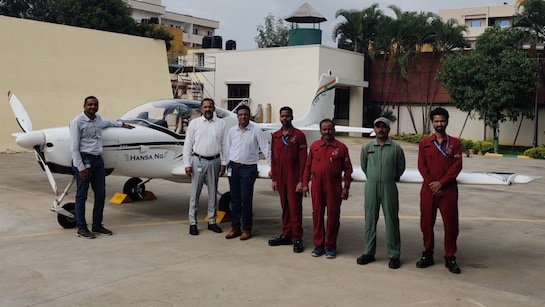Hansa Next Generation Trainer Aircraft
India’s aviation industry is experiencing rapid growth, with over 10 crore passengers annually. To sustain this growth, there is an urgent need for approximately 30,000 new pilots in the coming years. The introduction of the Hansa Next Generation (NG) trainer aircraft, developed by the National Aerospace Laboratories (NAL), aims to address this demand. This indigenous aircraft is designed to enhance pilot training and reduce reliance on foreign models.
Hansa NG Trainer Aircraft
The Hansa NG is a two-seater trainer aircraft designed for Commercial Pilot Licensing (CPL). It features advanced technology, including a digital glass cockpit and an efficient Rotax 912 iSc3 Sports engine. With a range of 620 nautical miles and a maximum cruise speed of 98 knots, it provides excellent performance for training purposes. The aircraft is priced competitively, costing about Rs 2 crore less than imported alternatives.
Development and Manufacturing Partnership
A partnership has been established between NAL and Pioneer Clean Amps Pvt Ltd, Mumbai. This collaboration aims to manufacture the Hansa NG aircraft domestically. Initially, the goal is to produce 36 aircraft per year, with plans to scale up to 72 units annually. This initiative aligns with the Atmanirbhar Bharat (self-reliant India) campaign, promoting indigenous manufacturing and technology.
Features and Capabilities
The Hansa NG boasts several modern features. Its glass cockpit enhances pilot training through a user-friendly interface. The aircraft is equipped with electrically operated flaps and has a cabin width of 43 inches, providing comfort for trainees. Additionally, the aircraft’s design allows for potential applications in surveillance and environmental monitoring.
Employment and Economic Impact
The production of the Hansa NG is expected to create numerous job opportunities. It will involve on-the-job training for ITI and diploma holders in various aircraft building disciplines. The initiative aims to democratise pilot training, making it more accessible and affordable for aspiring pilots. This focus on indigenization is anticipated to stimulate the growth of small and medium enterprises in the aviation sector.
Future of Aviation Training in India
India’s aviation sector is on track to expand , with plans to increase the number of airports from 159 to 300. The Hansa NG will play important role in developing a robust flying training ecosystem. This is essential as the country prepares for a growing fleet of over 1,700 aircraft, each requiring a substantial number of trained pilots.
Month: Current Affairs - April, 2025
Category: Science & Technology Current Affairs








